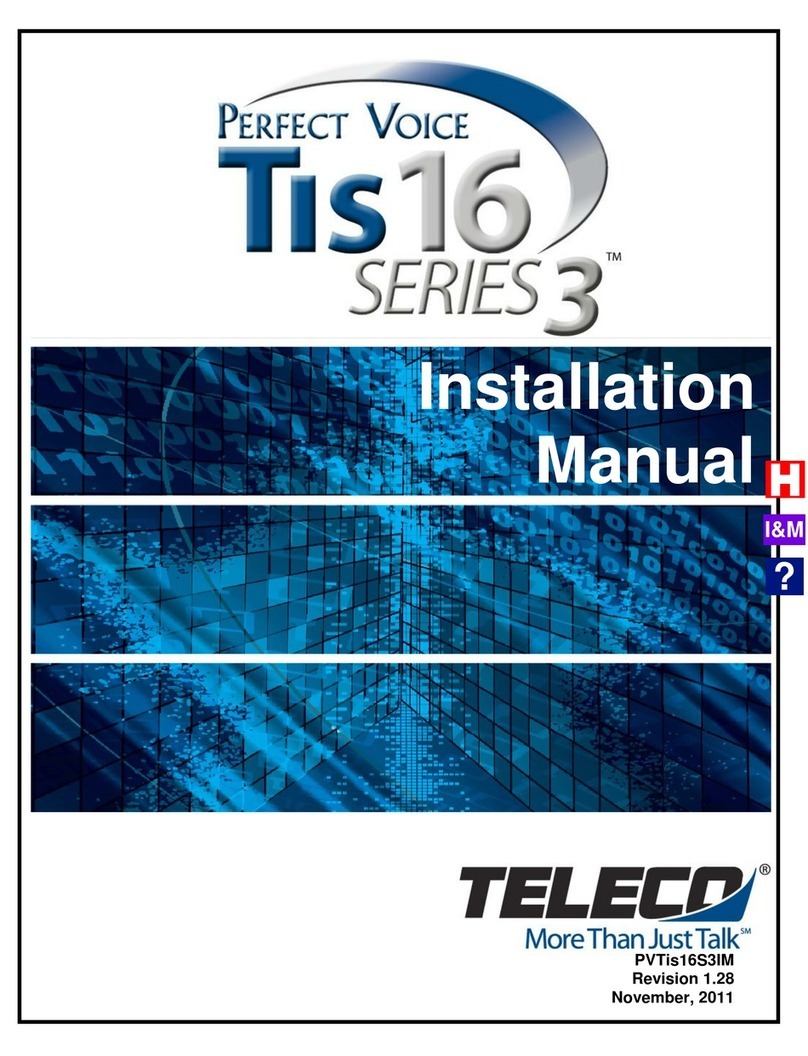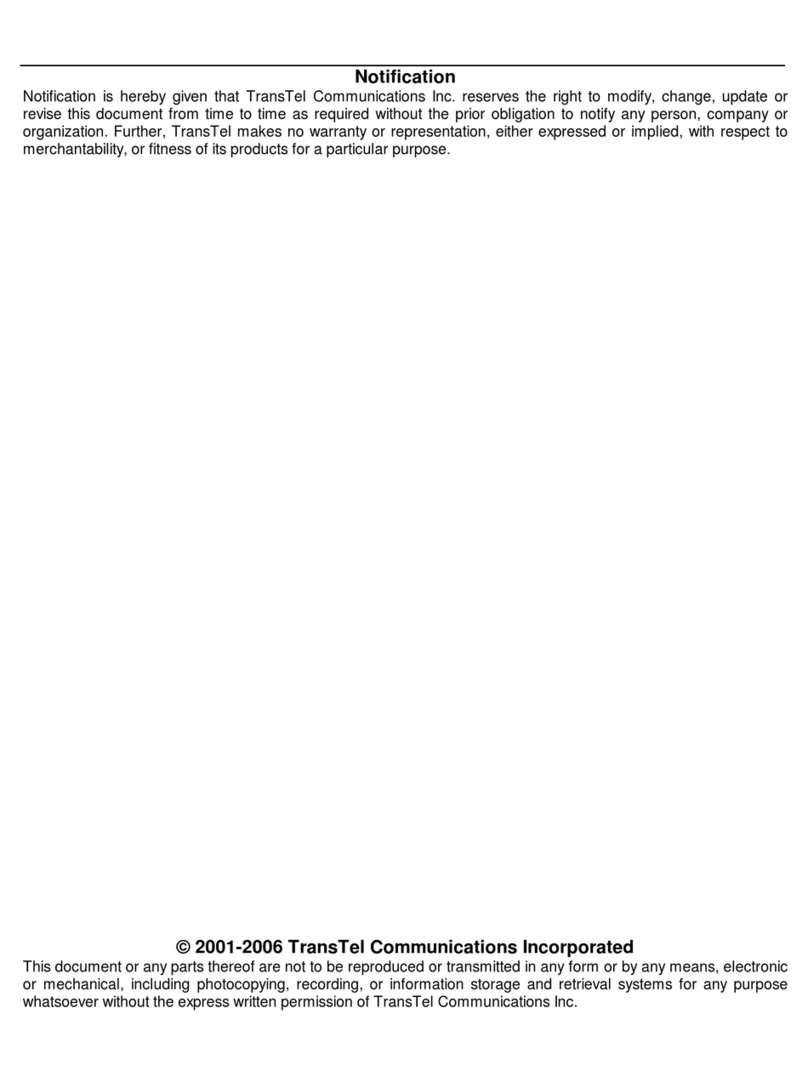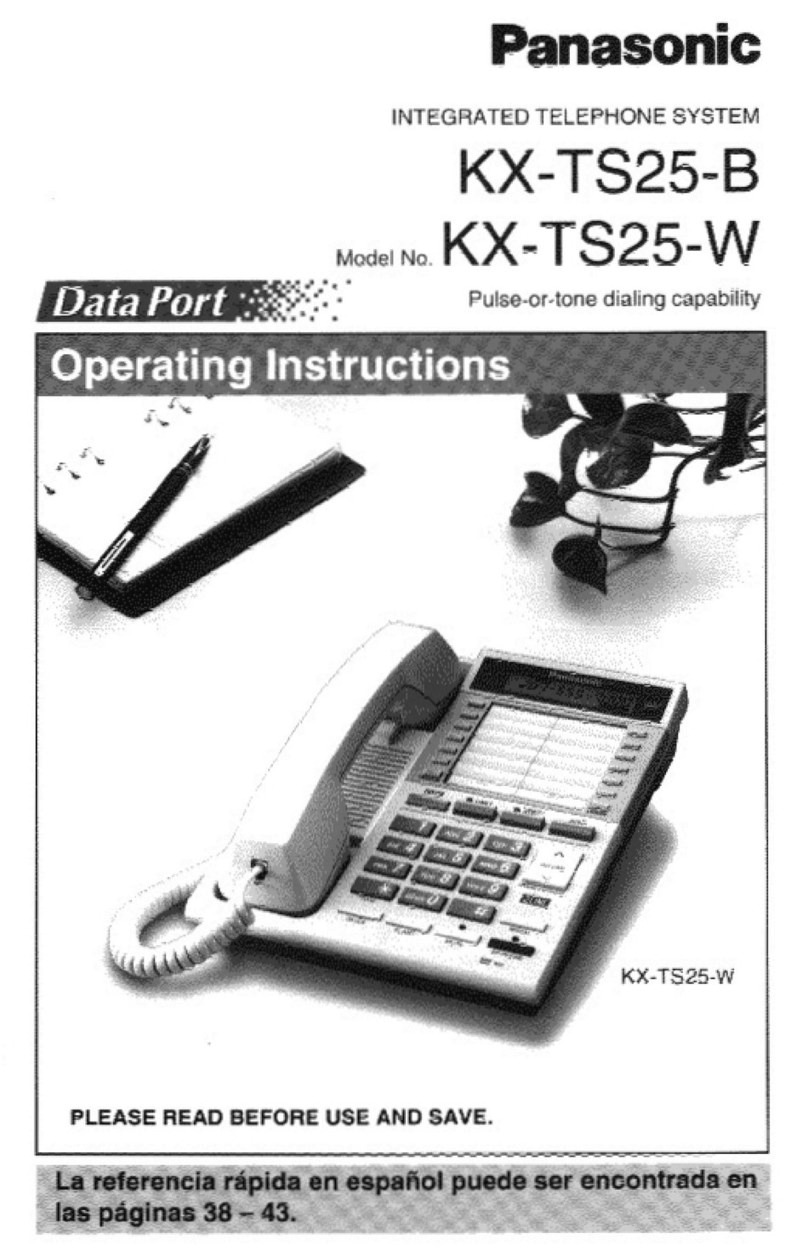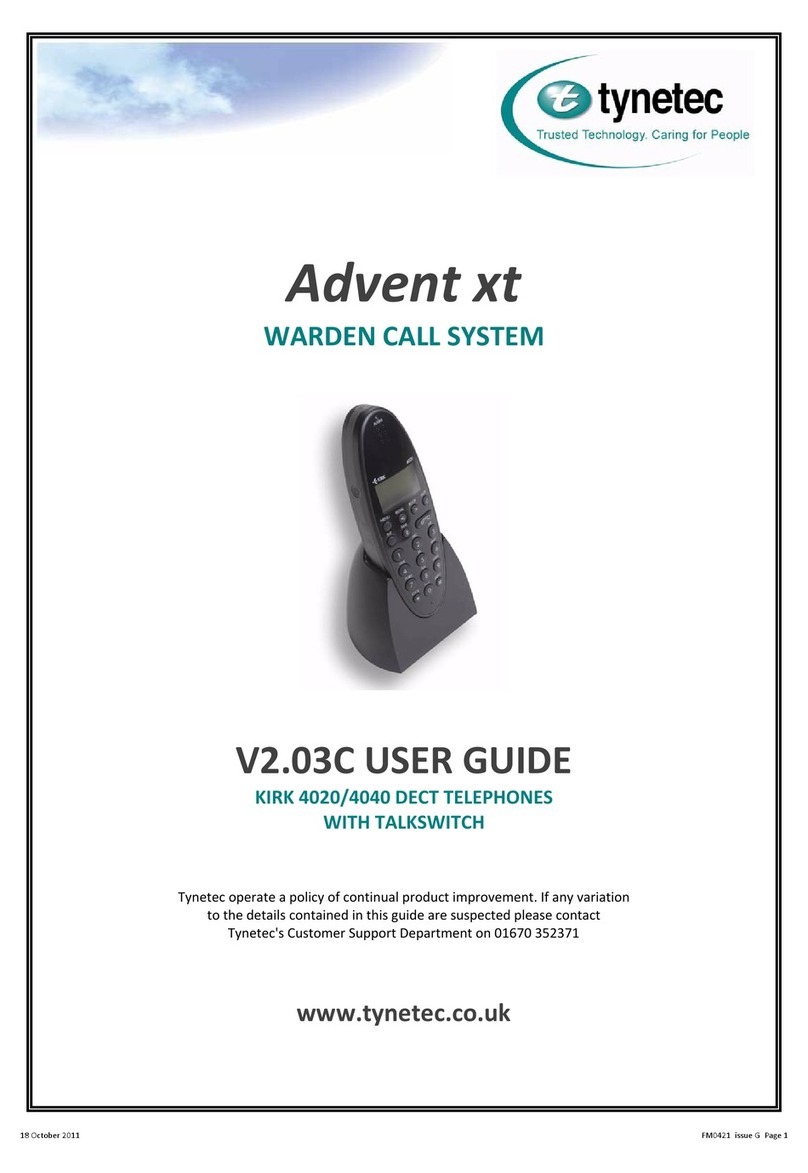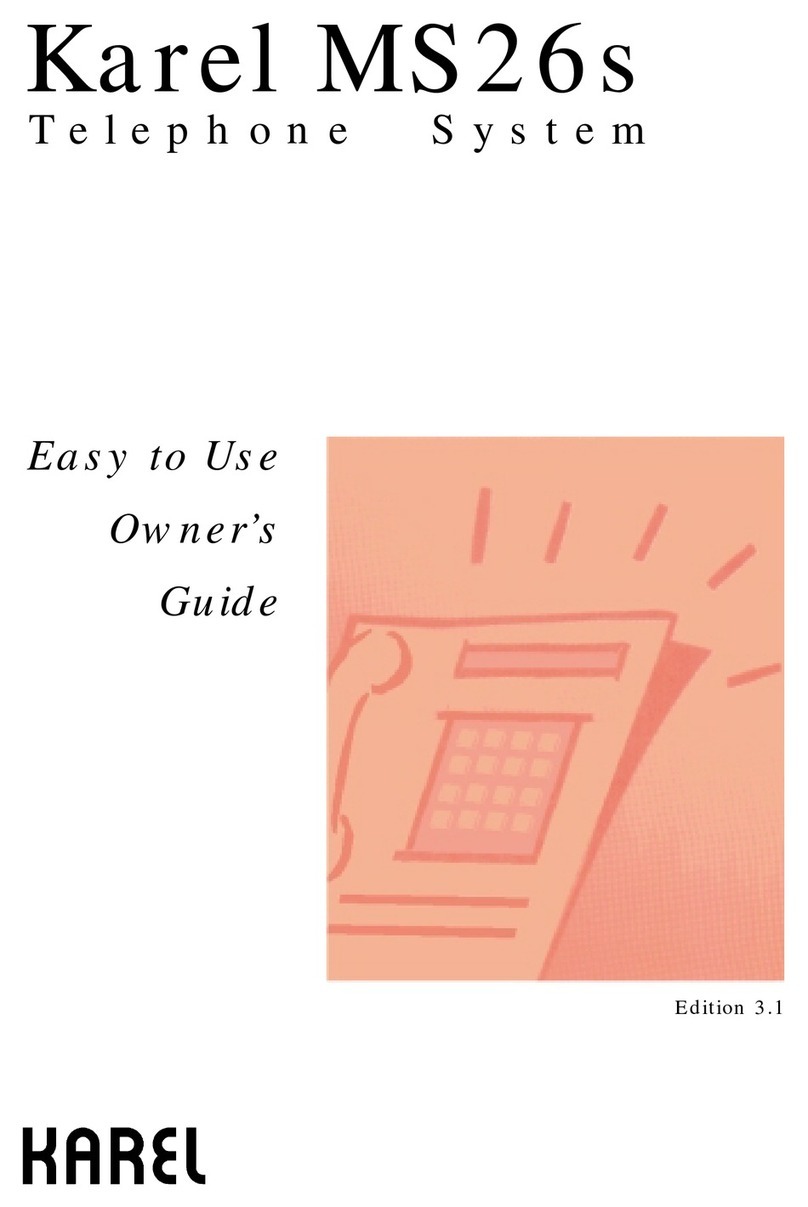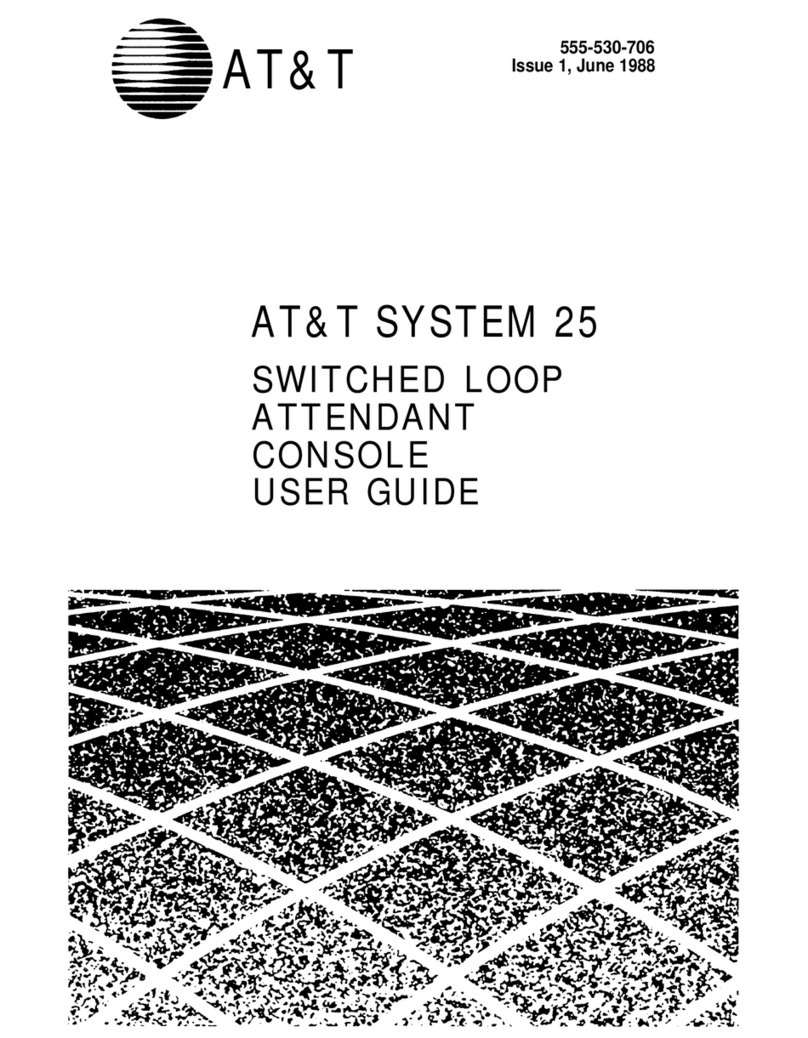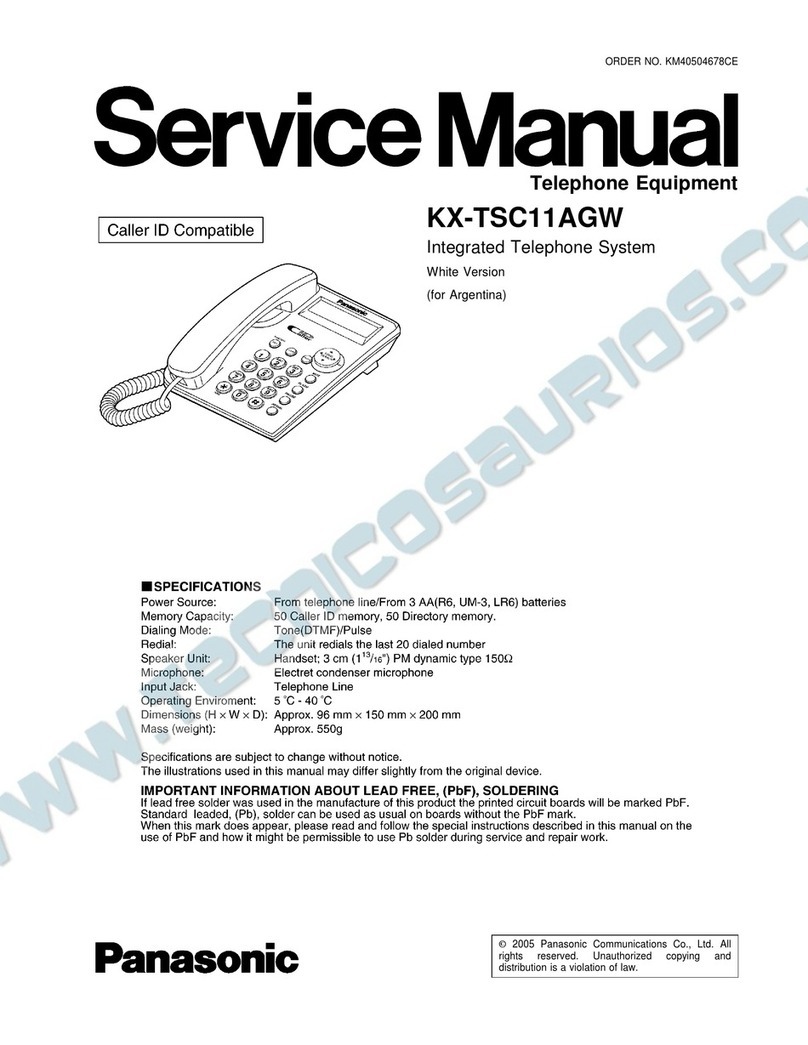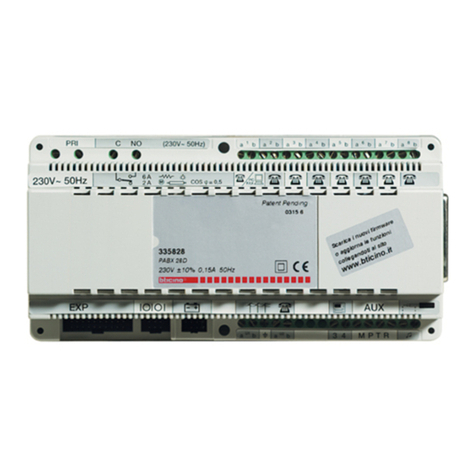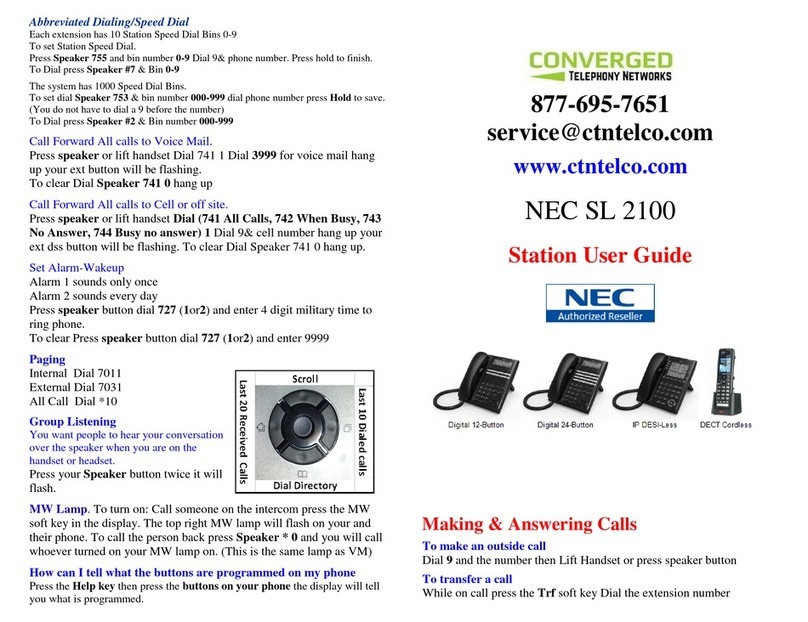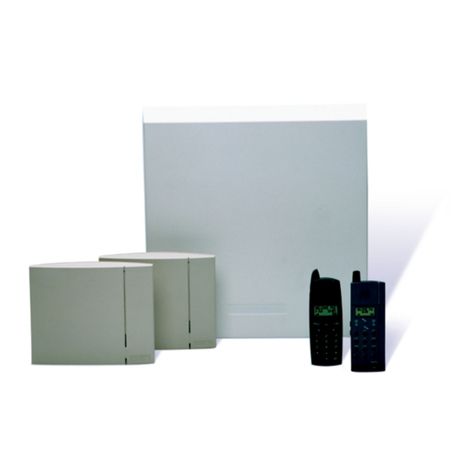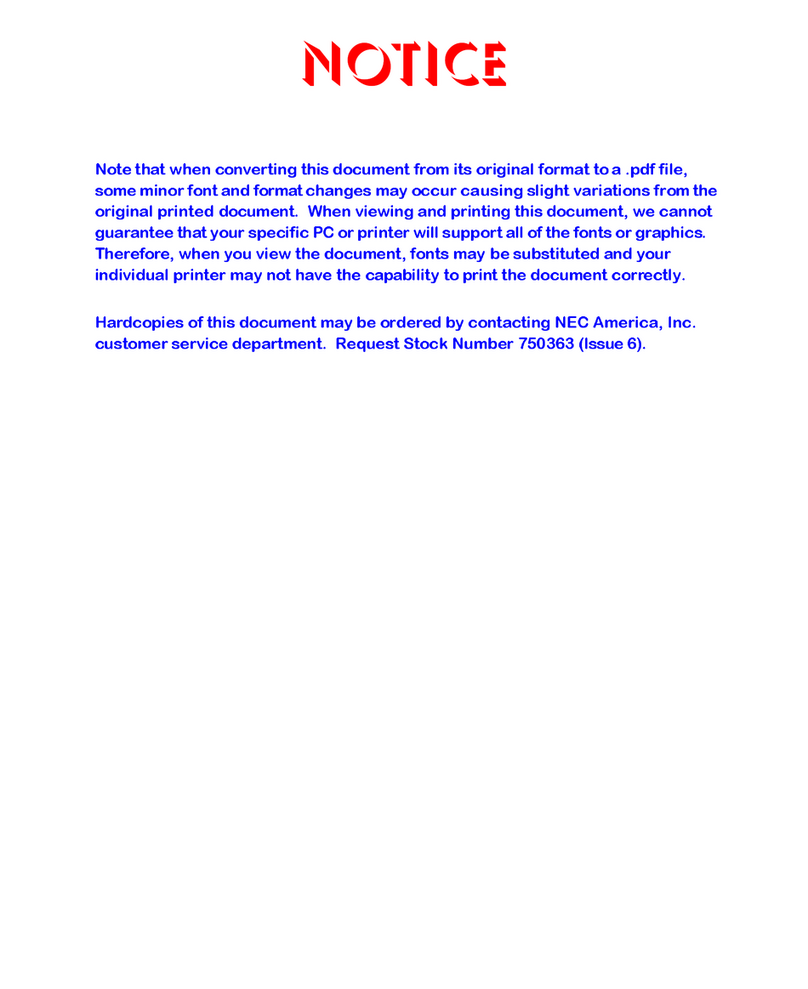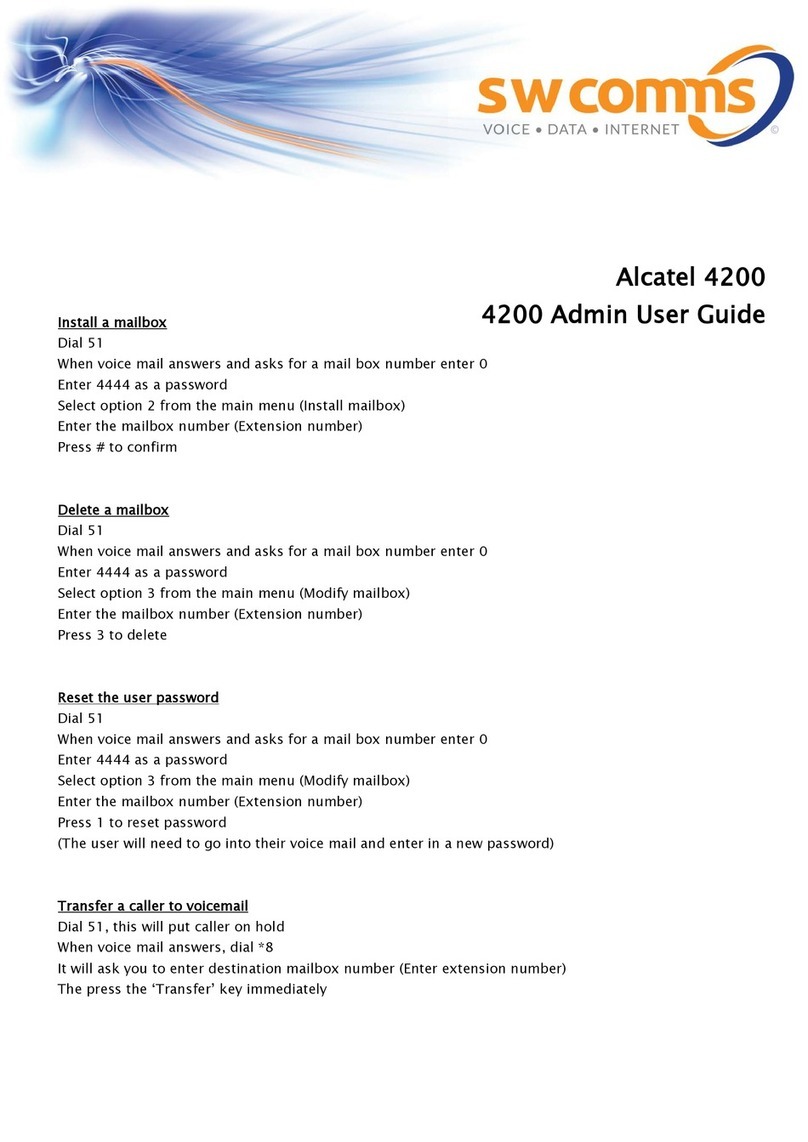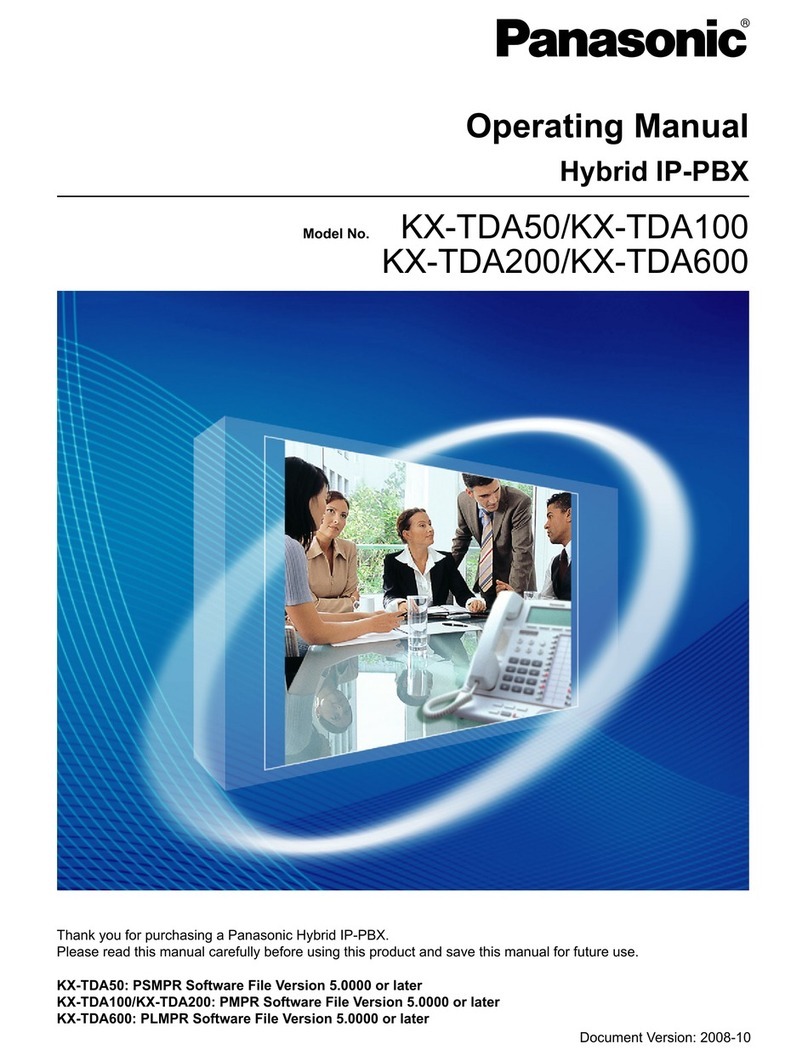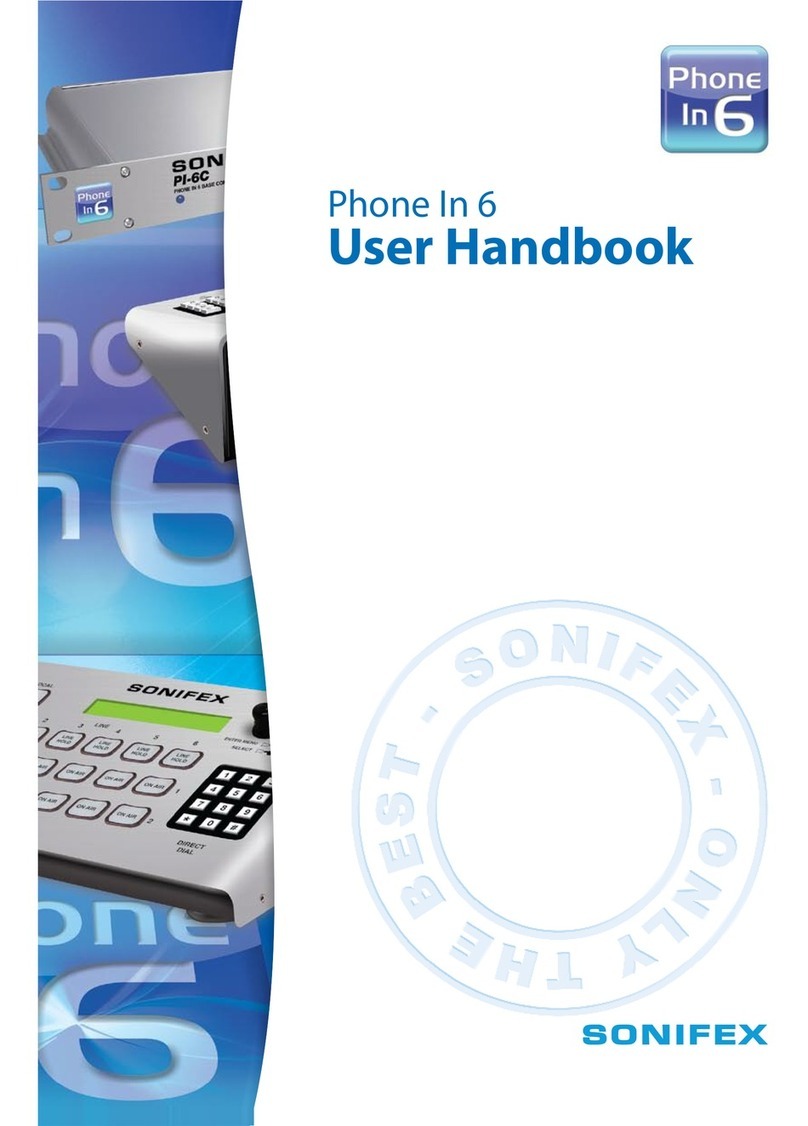
The new face of digital communication
3
IV.k. Call Hold………………………………………………………………………………...14
V. Privilege Features ........................................................................................................14
V.a. Listening In……………….….…………………..…….……………………………….....15
V.b. Room Monitor……………………………………………………………………………..15
V.c. Barge-in with Tone………………………………………………………………………..15
V.d. 3-Party Conference……………………………………………………………………….15
V.e. Do Not Disturb………………………………………...…………………………………..16
V.f. Do Not Disturb Cancel……………………………………………………………............16
V.g. Junction Transfer...………………………………………………………………….….…16
V.h. Serial Call...…………………………………………………………………………….….16
V.i. Second Junction Call……………………………………………………………………...17
V.j. CLIR (Caller Line Identification Restriction)…………………………………………….17
V.k. Delayed Hotline Enable/Disable…………………………………………………………17
VI. Alarms ......................................................................................................................... 18
VI.a. Set Alarm for Self Extension..………………………………………………………… 18
VI.b. Disable Self Alarm..……………………………………………………………………..18
VI.c. Set Alarm for Other Extension..………………………………………………………..18
VI.d. Disable Alarm for Other Extension…………………………………………………….18
VII. Call Forwarding .......................................................................................................... 18
VII.a. Enable/Disable Call Forwarding………………………………………………….......19
VII.b. Unconditional Forwarding……………………………………………………………..19
VII.c. Forwarding on Busy…….………………………………………………………………19
VII.d. Forwarding on No Reply….……………………………………………………………20
VII.e. Cancel Forwarding……………………………………………………………………..20
VIII. Walk-in CoS ................................................................................................................ 20
VIII.a. Walk-in Enable/Disable……………………………………………..………….……..20
VIII.b. Temporary Walk-in…………………………………………………………………….21
VIII.c. Permanent Walk-in…………………………………………………………………….21
VIII.d. Cancel Walk-in…………………………………………………………………………21
IX. Budget & Bill ……………..…………………………………………………..………….…..21
IX.a. Day Budget Announcement……………………………………………………………21
IX.b. Month Budget Announcement…………………………………………………………21
IX.c. Day Bill Announcement………………………………………………………………..22
IX.d. Month Bill Announcement…..…………………………………………………………22
